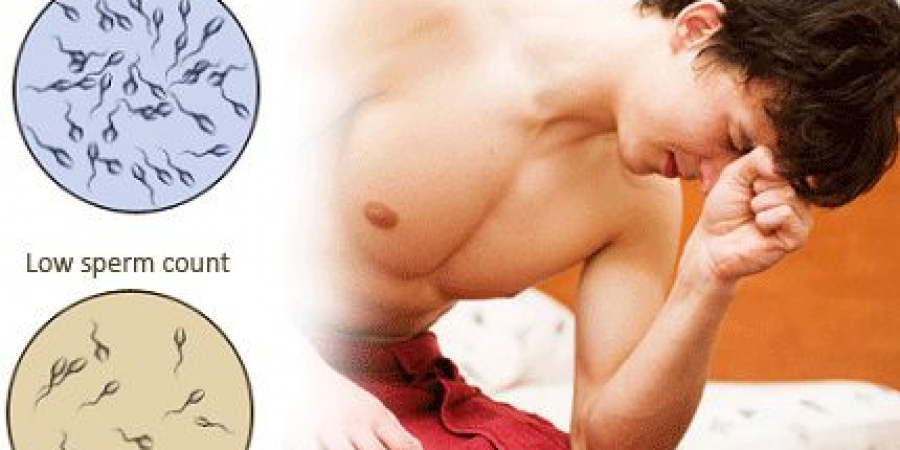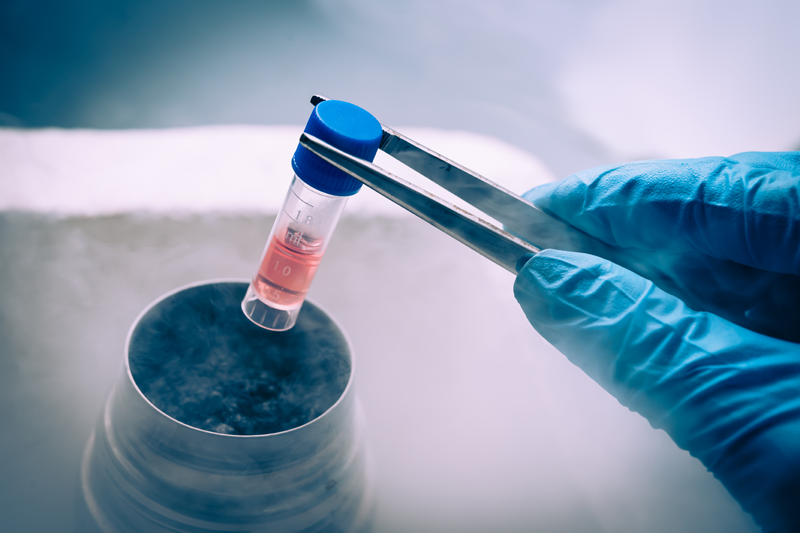What is a prolactinoma and how can it affect a person’s sexual function?
What is a prolactinoma and how can it affect a person’s sexual function?




Up to 15 percent of couples are infertile. This means they aren't able to conceive a child even though they've had frequent, unprotected sexual intercourse for a year or longer. In up to half of these couples, male infertility plays a role.
Male infertility is due to low sperm production, abnormal sperm function or blockages that prevent the delivery of sperm. Illnesses, injuries, chronic health problems, lifestyle choices and other factors can play a role in causing male infertility.
Not being able to conceive a child can be stressful and frustrating, but a number of male infertility treatments are available.

The main sign of male infertility is the inability to conceive a child. There may be no other obvious signs or symptoms. In some cases, however, an underlying problem such as an inherited disorder, hormonal imbalance, dilated veins around the testicle, or a condition that blocks the passage of sperm causes signs and symptoms.
Although most men with male infertility do not notice symptoms other than inability to conceive a child, signs and symptoms associated with male infertility include:
See a doctor if you have been unable to conceive a child after a year of regular, unprotected intercourse or sooner if you have any of the following:
Male fertility is a complex process. To get your partner pregnant, the following must occur:

Problems with male fertility can be caused by a number of health issues and medical treatments. Some of these include:
Treating the varicocele can improve sperm numbers and function, and may potentially improve outcomes when using assisted reproductive techniques such as in vitro fertilization.
Some men with spinal cord injuries or certain diseases can't ejaculate semen, even though they still produce sperm. Often in these cases sperm can still be retrieved for use in assisted reproductive techniques.
Blockage can occur at any level, including within the testicle, in the tubes that drain the testicle, in the epididymis, in the vas deferens, near the ejaculatory ducts or in the urethra.
Overexposure to certain environmental elements such as heat, toxins and chemicals can reduce sperm production or sperm function. Specific causes include:
Sitting for long periods, wearing tight clothing or working on a laptop computer for long stretches of time also may increase the temperature in your scrotum and may slightly reduce sperm production.
Some other causes of male infertility include:
Certain occupations including welding or those involving prolonged sitting, such as truck driving, may be associated with a risk of infertility. However, the research to support these links is mixed.
Risk factors linked to male infertility include:
Many infertile couples have more than one cause of infertility, so it's likely you will both need to see a doctor. It might take a number of tests to determine the cause of infertility. In some cases, a cause is never identified.
Infertility tests can be expensive and might not be covered by insurance — find out what your medical plan covers ahead of time.
Diagnosing male infertility problems usually involves:
Your semen is then sent to a laboratory to measure the number of sperm present and look for any abnormalities in the shape (morphology) and movement (motility) of the sperm. The lab will also check your semen for signs of problems such as infections.
Often sperm counts fluctuate significantly from one specimen to the next. In most cases, several semen analysis tests are done over a period of time to ensure accurate results. If your sperm analysis is normal, your doctor will likely recommend thorough testing of your female partner before conducting any more male infertility tests.


Your doctor might recommend additional tests to help identify the cause of your infertility. These can include:
However, this test is not commonly used to diagnose the cause of infertility.
Often, an exact cause of infertility can't be identified. Even if an exact cause isn't clear, your doctor might be able to recommend treatments or procedures that will result in conception.
In cases of infertility, the female partner is also recommended to be checked. This can help to determine if she will require any specific treatments or if proceeding with assisted reproductive techniques is appropriate.
Treatments for male infertility include:

This can be confusing since the terms are often used interchangeably in the media and casua conversation.
However, they are very different. Sperm are the male reproductive cells that contain genetic material. A sperm is made up of three main parts: the head, the midpiece, and the tail. Semen is the liquid that is ejaculated and may or may not contain sperm. This liquid is produced by glands in the reproductive system and also contains enzymes and fructose in addition to sperm.
Chemotherapy or radiation can affect your ability to make sperm or impact the ability of the sperm to fertilize an egg.
The type, location, and duration of the treatment can affect whether those changes are temporary or permanent. For some types of cancer, the reproductive organs are removed or damaged during surgery that is performed to remove the cancer.
Yes! Sperm can be collected and frozen for later use before cancer treatment is started. This way, you may be able to have children after your treatment. This process is called
cryopreservation or freezing. The kind of cancer you have and the treatments you will receive can determine what your options are.
For many men, collecting sperm to freeze is a simple, noninvasive procedure. You will be shown to a private room, asked to masturbate to orgasm, and collect your semen in a special container.
A usual semen sample will contain around 5-20 million sperm per milliliter and is able to be divided into several vials for storage. Often, since sperm production is affected by many factors, you may be asked to collect more than one sample. This helps to improve your chances of being able to have a child later.
Some men are unwilling or unable to collect a sample through masturbation. For these men, a special condom may be used to collect semen during intercourse.
Other men have a blockage in their reproductive tract; as a result, no sperm are found in their semen. Sperm can be obtained through various procedures that remove them
directly from the testicle or reproductive tubes located beside the testicles.
Some men may have a condition that causes sperm and some or all of the semen to collect in the bladder instead of being released through the tip of the penis. For those men,
sperm can often be collected from the urine after intercourse.
If a man is unable to ejaculate (release semen durin orgasm), there are options. Sperm can be surgically removed from the testicles and injected directly into an egg in a process called intracytoplasmic sperm injection (ICSI).
If a man is not able to ejaculate due to spinal cord injury, vibratory stimulation or electroejaculation can be used.
Once collected, the semen sample is mixed with cryoprotectants. These are liquids that help protect the sperm against damage during freezing and thawing. The sample is then frozen by a slow-cooling method or a flash freezing method called vitrification.
Sperm can be stored indefinitely. Sperm that have been frozen for over 20 years have been used to create pregnancies. Testicular tissue cryopreservation Because very few sperm are necessary to fertilize an egg in a dish, it is possible to obtain sperm directly from the testicle. In cases where very few sperm are produced, this may be the best option. Additionally, some patients have
not yet reached a point of puberty where they have sperm in their ejaculate. It is important to note that it will be necessary to have intracytoplasmic sperm injection (ICSI) when using testicular sperm.
When a boy has not begun to make mature sperm, options are limited. In some research centers across the world, samples of testicular tissue are removed and frozen. When
it’s time to attempt pregnancy, the tissue is examined for stem cells. Stem cells are cells that have the potential to develop into many different kinds of cells. The hope is to
isolate these few cells and mature them into functional sperm. So far, animal research is promising and human studies are ongoing. It is important to remember that this is
an experimental procedure and whether it will be successful is not known.
The most important thing to remember about fertility preservation is that it should be done prior to any cancer treatment if possible. This will give you the best chance of having usable sperm.




